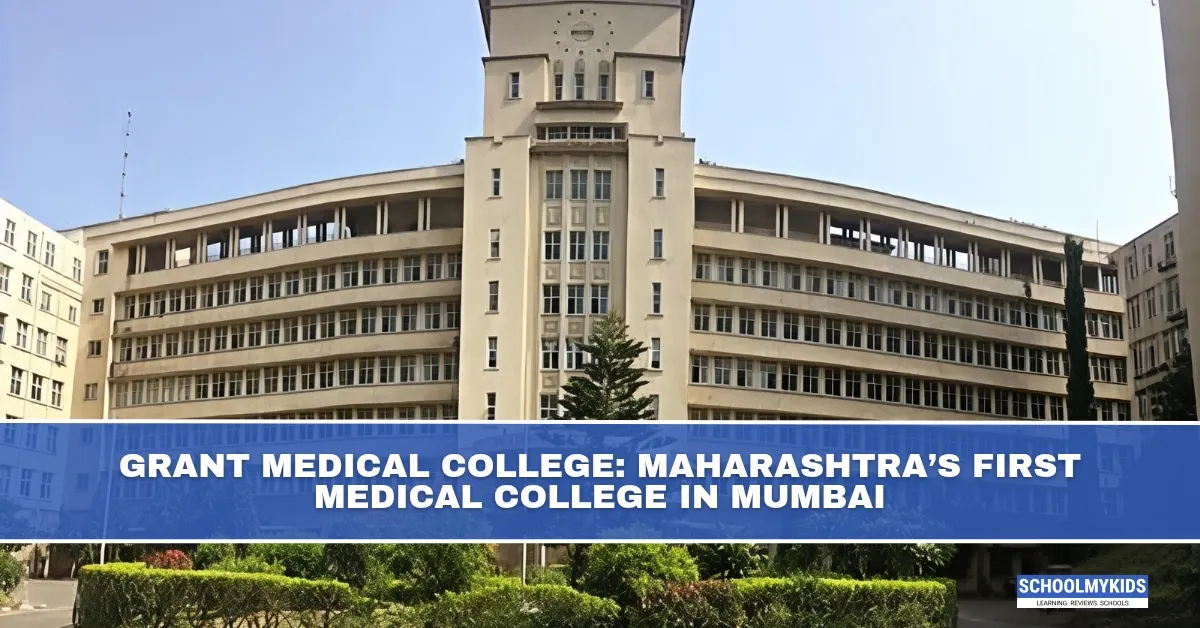Introduction
Grant Medical College (GMC), established in 1845 in Mumbai, holds the distinction of being the first medical college in Maharashtra and one of the oldest institutions for medical education in Asia. Over the decades, it has played a significant role in shaping modern medicine in India. With a strong foundation rooted in colonial history and a commitment to excellence, GMC continues to produce some of the finest healthcare professionals in the country.
Historical Background
The need for trained Indian doctors in the Bombay Presidency led to the formation of GMC. The idea was actively supported by Sir Robert Grant, then Governor of Bombay. Although he passed away before seeing his vision realized, his efforts were acknowledged by naming the college after him.
The financial and institutional support came from Indian philanthropist Sir Jamsetjee Jeejeebhoy, who also funded the adjacent hospital. The foundation stone of the college was laid in 1843, and it officially began functioning in 1845, offering western-style medical education to Indian students of all communities.
The College and Sir J. J. Hospital
The Grant Medical College is integrally connected with the Sir Jamsetjee Jeejeebhoy (J. J.) Hospital, which serves as its teaching hospital. This partnership allows medical students to gain clinical experience from the very beginning of their course. Sir J. J. Hospital, with thousands of beds, is one of the largest public hospitals in India and offers extensive medical services to the underprivileged.
Academic Excellence
Undergraduate Program: The college offers the Bachelor of Medicine and Bachelor of Surgery (MBBS) degree. Admission is through the national NEET-UG examination. The program includes classroom teaching, laboratory sessions, hospital postings, and a one-year internship.
Postgraduate and Super-Specialty Courses: GMC provides postgraduate degrees such as MD (Doctor of Medicine), MS (Master of Surgery), and super-specialty courses like DM and MCh in various disciplines. The college is known for its high academic standards and competitive learning environment.
Other Programs: Allied health science courses, nursing programs, and research-based training are also available, making it a full-fledged medical education hub.
Contributions to Medicine and Research
Grant Medical College has been at the forefront of several medical advancements:
- It hosted the development of the first plague vaccine by Waldemar Haffkine in the 1890s.
- It contributed significantly to cholera research with scientists like Robert Koch and Dr. Acacio Veigas.
- The college has played an important role in India’s medical response to various epidemics and public health challenges.
Inclusion and Social Impact
Right from its early years, GMC allowed admissions without discrimination based on caste or religion. In 1884, the college admitted its first female student, and it soon graduated India’s early women doctors, including pioneers like Dr. Anandibai Joshi and Dr. Freny Cama.
The college was not just a center of learning but also a symbol of modern Indian aspirations during British rule, with many graduates going on to become leaders in healthcare, public policy, and education.
Campus and Infrastructure
The 44-acre campus in Byculla includes:
- Academic blocks and lecture halls
- Laboratories and skill labs
- An extensive library with thousands of reference books and journals
- Hostels for undergraduate and postgraduate students
- A bustling hospital that provides ample clinical exposure
The architecture reflects a blend of colonial legacy and modern facilities.
Notable Alumni
GMC has an illustrious list of alumni, including:
- Dr. Bhau Daji Lad, one of the earliest graduates and a renowned physician and social reformer
- Dr. Jivraj Mehta, the first Chief Minister of Gujarat and a key figure in post-independence Indian healthcare
- Dr. Shirodkar, known for contributions to gynecology
- Dr. Homi Bhabha’s family physician, who influenced early cancer treatment in India
These alumni reflect the institution’s contribution to both clinical practice and nation-building.
Preservation of Heritage
Efforts are currently underway to establish a museum within the original GMC building. This museum will showcase the historical archives, old medical instruments, photographs, and other artefacts that tell the story of Indian medical education and public health. The initiative is supported by alumni and the Public Works Department.
Why Grant Medical College Still Matters
- Historic Significance: A pioneer in bringing Western medicine to India.
- Academic Rigor: Consistently ranked among the top medical colleges in the country.
- Clinical Exposure: Attached to one of India’s busiest public hospitals.
- Inclusive Values: Opened doors to women and marginalized communities even in the 19th century.
- Research Legacy: Contributed to global medical milestones.
Conclusion
Grant Medical College is not just an academic institution—it is a living legacy of India’s journey through colonial history, medical advancements, social reforms, and modern-day public health. From its first batch of students to its ongoing commitment to service and excellence, GMC continues to be a beacon of medical education in India. Its contribution to society, medicine, and education makes it one of the most respected medical colleges in the country today.








Be the first one to comment on this story.